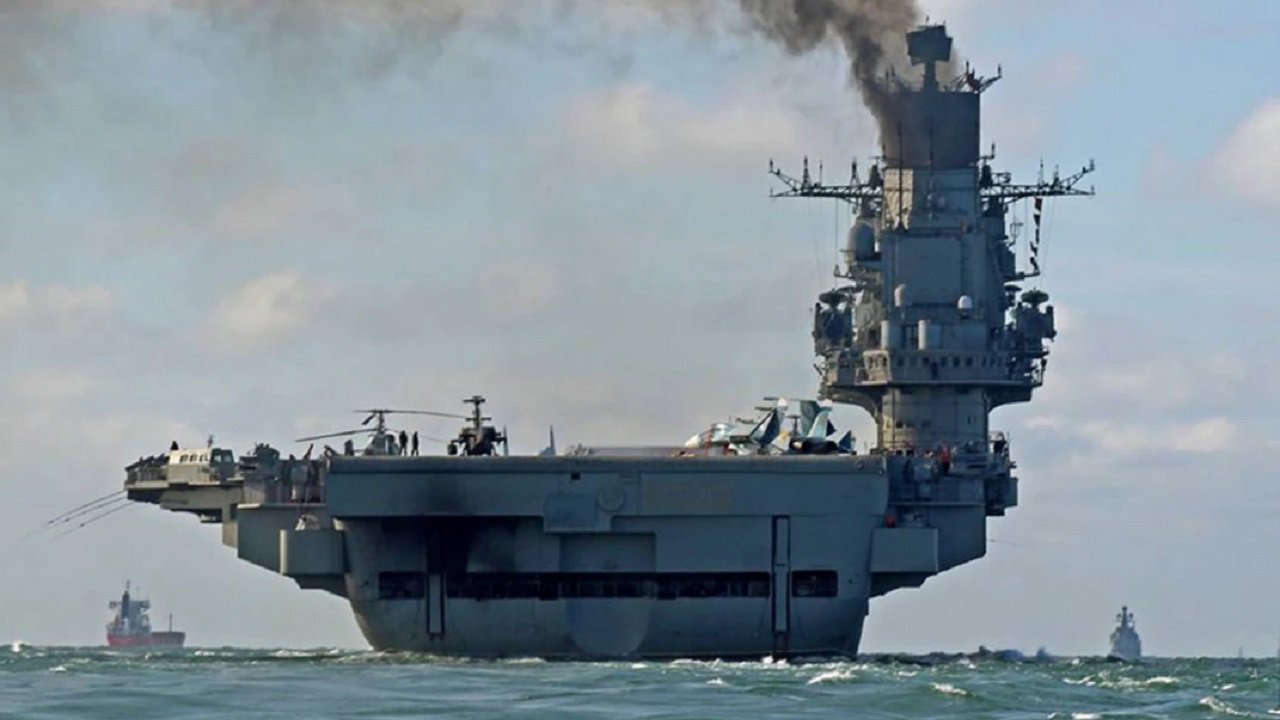For decades now, the Russian Navy has always wanted a big and powerful nuclear-powered aircraft carrier to match up against the might U.S. Navy. Sadly, as one expert explains below, those efforts in the late 1980s failed:
As the Cold War entered its twilight years, the Soviet Union became increasingly interested in building up a blue water navy, one which could challenge the United States’ naval dominance around the world and insulate the Soviet mainland from naval incursions in the event of war. As part of this, Soviet naval authorities sought to develop a nuclear supercarrier, which would have significantly improved the Soviet Union’s ability to operate overseas. However, the construction of the Ulyanovsk ultimately fell victim to the sharp reduction of resources afforded to the Ru
An answer to American Carrier Strike Groups
Powered by four KN-3 nuclear reactors, the Ulyanovsk (or Project 1143.7 as it was officially designated) would have been the Soviet Union’s first nuclear-powered aircraft carrier. Development of the carrier began as an evolution of the prior Project 1153 Orel design, which also never saw completion. The Ulyanovsk was first laid down in 1988 at the Black Sea Shipyard in Nikolayev (now known by its Ukrainian name Mykolaiv). Soviet naval leaders hoped that the Ulyanovsk would serve as an answer to the United States Navy’s use of carrier groups as one of its principal instruments of military power on the world ocean.
Despite its planned status as a significant element of a future-oriented Soviet Navy, the significant collapse of resources and funding available to support the construction of the Ulyanovsk brought on by the breakup of the Soviet Union in 1991 caused the ship to be sold for scrap in 1992. At the time the project was cancelled, the Ulyanovsk was about 20 to 40% complete, and was scheduled to be finished later that decade.
The Ulyanovsk would have been a massive ship
If it had been completed, the Soviet Union’s first Ulyanovsk-class carrier would have been a massive vessel with a displacement of 85,000 tons. It would have carried almost 70 aircraft, including a mixture of Su-33 (the carrier-based version of the Su-27) and MiG-29K fighters, Yak-44 airborne early warning aircraft (the development of which was also cancelled after the Cold War), as well as different Ka-27 variants designed for anti-submarine warfare and air-sea rescue. In addition to this contingent of aircraft, the Ulyanovsk was intended to possess 12 P-700 Granit anti-ship missile systems, as well as a variety of air defense, anti-aircraft cannon, and close-in weapons weapon systems.
The Ulyanovsk’s hypothetical place in the Soviet Navy
Had it become operational, and the Soviet Union remained intact, the Ulyanovsk would have likely served alongside several other Soviet-designed carriers. Today, the only remaining Soviet carrier in the Russian Navy (and its only carrier at all) is the Admiral Kuznetsov, whose frequent breakdowns and unreliable and deficient non-nuclear power plant have practically made it more of a liability than an asset. The Ulyanovsk was intended to leapfrog the Admiral Kuztensov class by going toe-to-toe with the American Nimitz-class supercarriers with the catapult capability to launch strike aircraft that would have struggled with the Admiral Kuznetsov’s ski-jump. In addition to the Admiral Kuznetsov, which was built and completed in the years prior to when the Ulyanovsk was ordered, the Ulyanovsk would have served alongside the five Soviet Kiev-class “heavy aircraft cruisers” of the Soviet Navy – the Kiev, Minsk, Novorossiysk, and the Admiral Gorshkov.
Despite its promising planned capabilities, the Ulyanovsk was unable to escape the effects of the collapse of the Soviet Union on Russian shipbuilding and arms manufacturing. Given Russia’s ongoing land invasion of Ukraine, it is likely that most of the resources and funds available to the Russian military will be spent to replenish equipment and weapon stocks during and after the war, rather than investing in a supercarrier like the Ulyanovsk.
Wesley Culp is a Research Fellow at the Center for the Study of the Presidency and Congress. He regularly writes on Russian and Eurasian leadership and national security topics and has been published in The Hill as well as in the Diplomatic Courier. He can be found on Twitter @WesleyJCulp.

